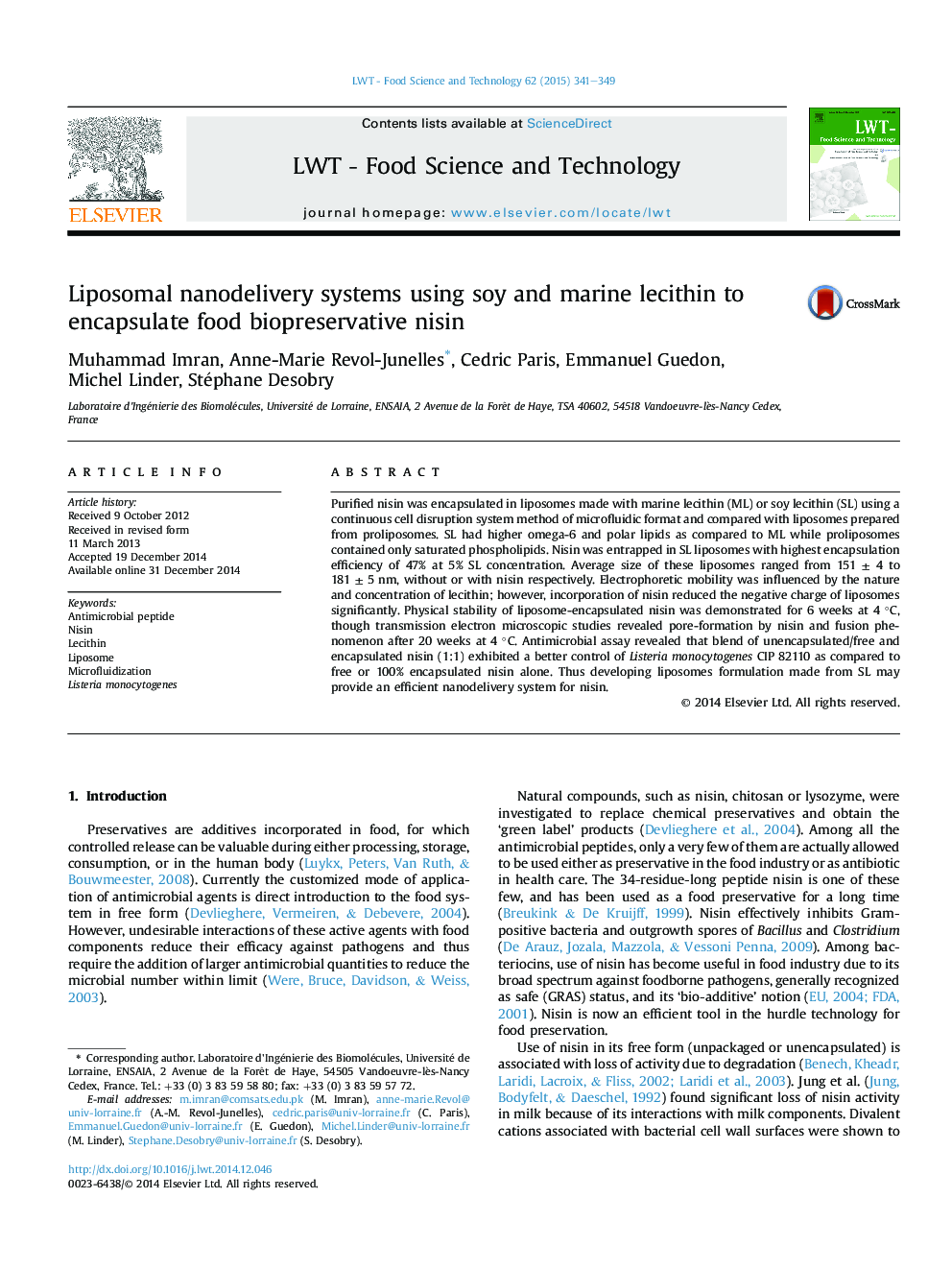| Article ID | Journal | Published Year | Pages | File Type |
|---|---|---|---|---|
| 6401357 | LWT - Food Science and Technology | 2015 | 9 Pages |
â¢Liposomes was produced from vegetable and marine lecithins and not only from pure phospholipids.â¢Liposome physico-chemical properties led to a high stability in adequacy with food applications.â¢Blend of free and encapsulated nisin was strongly effective against Listeria monocytogenes.
Purified nisin was encapsulated in liposomes made with marine lecithin (ML) or soy lecithin (SL) using a continuous cell disruption system method of microfluidic format and compared with liposomes prepared from proliposomes. SL had higher omega-6 and polar lipids as compared to ML while proliposomes contained only saturated phospholipids. Nisin was entrapped in SL liposomes with highest encapsulation efficiency of 47% at 5% SL concentration. Average size of these liposomes ranged from 151 ± 4 to 181 ± 5 nm, without or with nisin respectively. Electrophoretic mobility was influenced by the nature and concentration of lecithin; however, incorporation of nisin reduced the negative charge of liposomes significantly. Physical stability of liposome-encapsulated nisin was demonstrated for 6 weeks at 4 °C, though transmission electron microscopic studies revealed pore-formation by nisin and fusion phenomenon after 20 weeks at 4 °C. Antimicrobial assay revealed that blend of unencapsulated/free and encapsulated nisin (1:1) exhibited a better control of Listeria monocytogenes CIP 82110 as compared to free or 100% encapsulated nisin alone. Thus developing liposomes formulation made from SL may provide an efficient nanodelivery system for nisin.
